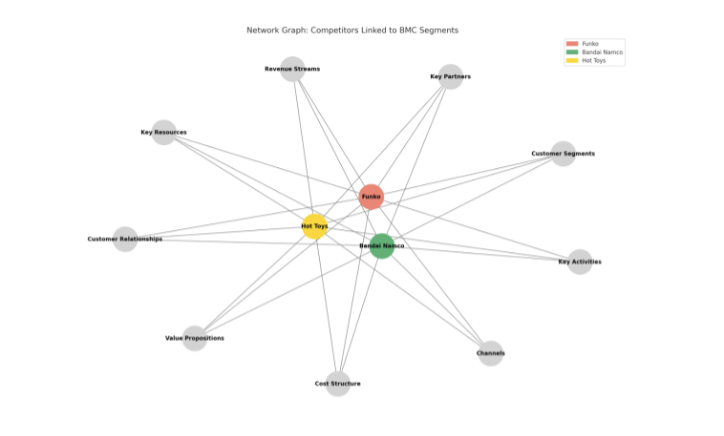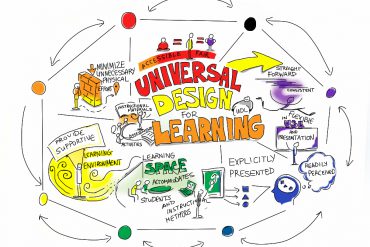Analysing complex, multinational companies and communicating these insights clearly is essential to international business. But it’s no small task! Recently Professor Hans Hendrischke and Dr Jun Zhao redesigned the learning experience in IBUS6020 and integrated generative AI (GenAI) into group activities and reflective essays. In this post, we share how the teaching team created a structured approach to support student collaboration, research, and analysis, using GenAI thoughtfully and responsibly.
AI-enhanced tutorials
At the beginning of the semester, students organise themselves in groups of five and choose a Chinese multinational enterprise to analyse. Each group focuses on the internationalisation strategy of a subsidiary company (case company) operating in an overseas market such as Australia, building their own database of information throughout the semester.
The tutorials follow a progressive structure where each session targets a key analytical task directly linked to the final assessment. Students systematically develop skills across topics including institutional frameworks, stakeholder and regulatory analysis, organisational change, strategic management, platform firms, and globalisation strategies. Generative AI is fully integrated into this weekly tutorial work, combined with active tutor facilitation to guide students through both analytical and technological learning.
Students learn prompting techniques from the outset, developing skills to carefully and iteratively guide generative AI towards results that align with business analysis and strategic management frameworks. Over the semester, all groups develop their own prompting routines, continuously revising and refining their approaches as their understanding deepens.
To support collaboration and ensure equal access to resources, student groups use shared spreadsheets to collect sources and present their findings through Miro templates. This commitment to inclusive design aligns with student-staff partnership approaches in other Business School initiatives, such as the co-creation of tailored GenAI guidance in FINC6600.
Sample task: AI-assisted network graph
Here’s an example of a tutorial activity. Students apply the Business Model Canvas (BMC) framework, a discipline-specific tool, to their chosen company to deepen their understanding of competitive dynamics. The process has four key steps:
- Identify main competitors relevant to each BMC segment (key partners, customer segments, value propositions, etc.).
- Compile this information into a templated spreadsheet, mapping each competitor to the corresponding BMC element.
- Use AI tools such as ChatGPT and visualisation platforms to create a network graph showing how competitors connect to specific BMC components.
- Combine the spreadsheet and the network graph into a Word document as a visual and analytical representation of their strategic competitor mapping.

What did students think?
Students felt that they were challenged to produce their best work. The activities link business theory and framework to management issues, and support skills for the final group report and presentation. Similar outcomes were observed in FINC6010, where structured interactions with AI chat agents helped students shift from confusion to confidence in applying complex finance concepts. As part of this process, student groups are asked to clearly distinguish:
- What their group produced independently
- What was generated by AI
- Why they made specific decisions about what to use or discard
The group-based collection of company data created a knowledge pool that could be compared to AI-supported results. By comparing AI-generated outputs with their own work and evaluating them, students explored and discussed biases and limitations in large language models, and responsible AI use. Students discovered they often had access to more detailed information than AI solutions.
Students brought varied experiences to their AI-supported learning. Those with corporate experience often built on the workflow to develop their own procedures. For students with less experience, structuring and scaffolding groupwork with AI boosted their confidence, helping everyone take part more equally in diverse groups. Some students were surprised by how many useful perspectives they could generate with effective prompts, while others were more sceptical. As one student reflected:
For me, I think the teaching method and approach of this class both have excellent creativity and content. During the process of completing the assignment, we made reasonable use of AI in the learning process and also cover the materials in the reading list. I think such a teaching method and structure can better help us students understand and master these contents and concepts.
Another student appreciated the forward-thinking approach:
Nowadays, AI is a widely applied tool, and this course has recognised that by allowing students to use AI in certain assignments. I believe this represents a step forward in teaching methodology, as it helps avoid spending excessive time on information searching and instead encourages deep thinking based on the insights synthesised by AI.
What did tutors think?
Tutors observed that student engagement and analytical capability improved throughout the semester, and earlier than expected. Integrating AI tools helped students move beyond surface-level analysis of strategic management concepts, with many groups producing sophisticated visual artefacts, such as competitor network graphs and stakeholder maps. This aligns with research showing that generative AI tasks can improve teaching performance in business education when they align well with specific teaching tasks.
Through repeated, reflective interaction with AI tools, students are developing the confidence and capability to use these tools effectively in both academic and professional international business settings.
Find out more
About how generative AI is used at the Business School:
- Learn more about how academics in the business school are using generative AI with report writing.
- Find out more about teaching at the University of Sydney Business School (internal link)
About generative AI at Sydney:
- Join the AI Community of Practice (CoP): Share experiences and learn from peers who are implementing generative AI in their teaching by joining the CoP
- Workshops on Cogniti, Sydney’s bespoke GenerativeAI tool: Come to a workshop to learn more and get hands-on experience
- Read how other educators are using Cogniti in their teaching in Teaching@Sydney articles





